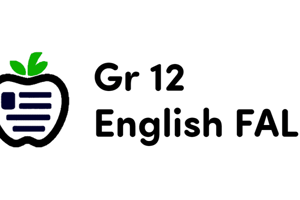Podcast
Questions and Answers
In active voice, the subject _____ the action.
In active voice, the subject _____ the action.
- demands
- receives
- ignores
- performs (correct)
Which of the following is a situation where passive voice is commonly used?
Which of the following is a situation where passive voice is commonly used?
- When you want to emphasize the actor
- To focus on the recipient of an action (correct)
- In scientific writing to emphasize choices and biases
- When naming the actor is important
What does passive voice emphasize in scientific writing?
What does passive voice emphasize in scientific writing?
- The equipment used in the experiments
- The outcomes and results of experiments
- Choices and biases of the scientists (correct)
- The actors involved in the experimentation
Which sentence demonstrates active voice?
Which sentence demonstrates active voice?
When is it beneficial to use passive voice to maintain consistency in a passage?
When is it beneficial to use passive voice to maintain consistency in a passage?
Which of the following is an example of a passive voice sentence?
Which of the following is an example of a passive voice sentence?
Which voice is generally preferred in most forms of writing?
Which voice is generally preferred in most forms of writing?
When converting a passive sentence to active, what should you look for?
When converting a passive sentence to active, what should you look for?
Which of the following is an example of an active voice sentence?
Which of the following is an example of an active voice sentence?
In which type of writing is passive voice particularly useful?
In which type of writing is passive voice particularly useful?
Why is active voice considered clearer and more concise in writing?
Why is active voice considered clearer and more concise in writing?
Study Notes
Unpacking Active and Passive Voice
Active and passive voice are fundamental aspects of sentence structure that influence the way we convey information. In this article, we'll explore these concepts, their uses, and how to decide when to use each one.
Active Voice
In an active sentence, the subject performs the action (e.g., "The children ate the cookies"). The subject appears before the verb, and its position signifies that the subject is the doer of the action.
Passive Voice
In a passive sentence, the subject receives the action (e.g., "The cookies were eaten by the children"). The subject appears after the verb, and its position indicates that the subject is not the doer of the action. Instead, it is acted upon.
When to Use Passive Voice
Passive voice is useful when you want to emphasize the action rather than the actor:
- To focus on the recipient of an action
- In scientific writing, where the processes and results are emphasized over the choices or biases of the scientists
- To keep the subject and focus consistent throughout a passage
- To be tactful by not naming the actor
- To create an authoritative tone
Examples of Active and Passive Voice
Active:
- The dog bit the man.
- The chef prepared each meal with loving care.
- The researchers earlier showed that high stress can cause heart attacks.
Passive:
- The man was bitten by the dog.
- Each meal was prepared with loving care by the award-winning chef.
- It was earlier demonstrated that heart attacks can be caused by high stress.
How to Edit for Active and Passive Voice
To convert a passive sentence to active, look for a "by" phrase or a "to be" verb. Rewrite the sentence so that the subject is closer to the beginning of the sentence:
Passive: It was proven that high stress can cause heart attacks. Active: High stress was proven to cause heart attacks.
Active: Researchers earlier showed that high stress can cause heart attacks. Passive: It was earlier demonstrated that heart attacks can be caused by high stress.
Conclusion
The active voice is generally preferred in most forms of writing because it is clearer and more concise. However, passive voice has its uses, particularly in scientific writing and when the emphasis is on the action rather than the actor. By understanding when to use active and passive voice, you can create more effective and well-balanced sentences.
Studying That Suits You
Use AI to generate personalized quizzes and flashcards to suit your learning preferences.
Description
Explore the concepts of active and passive voice in sentence structure, their differences, uses, and how to transition between them. Learn when to use each to convey information effectively and with impact.




